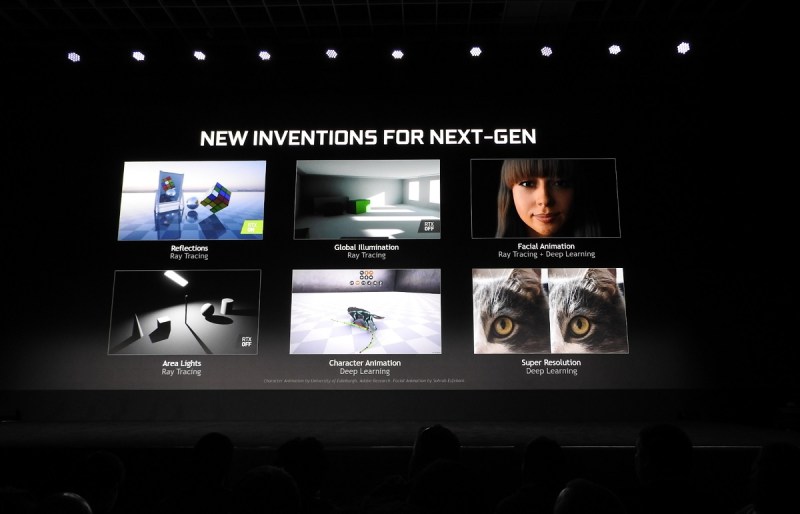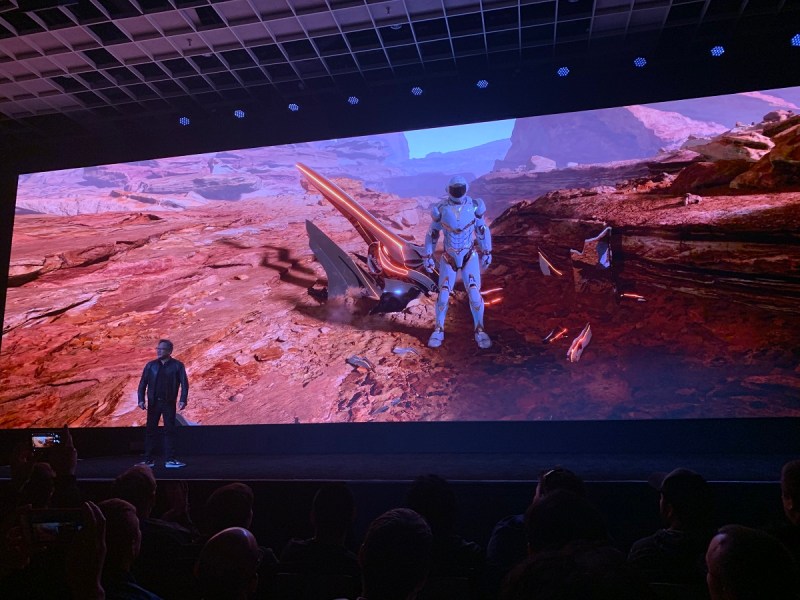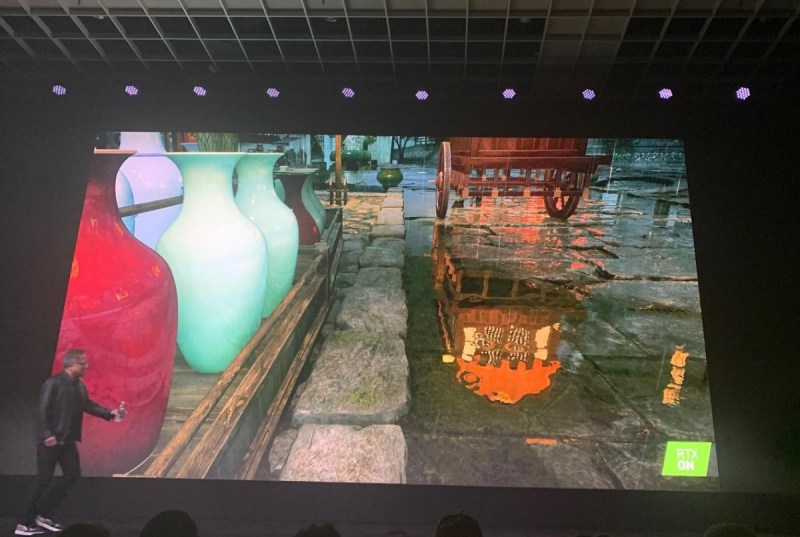Nvidia announced that it is taking its real-time ray-tracing graphics technology into gaming laptops today with the unveiling of the Nvidia GeForce RTX 2060 graphics processing units (GPUs). The chip can be used for laptops or desktops, depending on how a PC maker designs the system.
The new chips are more power-efficient versions of the GeForce RTX series that the company released last fall, optimized for mobile with Nvidia’s Max-Q technology, which optimizes your machine for games. The company showed off a bunch of demos of games like Battlefield V and Anthem running on a GeForce RTX 2060 version of the chips.
It was able to run Battlefield V with full real-time ray tracing (RTX) turned on at more than 60 frames per second. The RTX 2060 will be available next week for $349, with either Battlefield V or Anthem thrown in as part of the bundle. We will see 40 new laptops based on RTX technology, Nvidia said.
The RTX 2060 is 60 percent faster on current titles than the prior-generation GTX 1060, NVIDIA’s most popular GPU, and beats the gameplay of the GeForce GTX 1070 Ti. Nvidia also showed games running on another RTX chip, the Nvidia GeForce RTX 2080, which can run Battlefield V with RTX on at better than 60 frames per second. The RTX 2080 came out last fall.
June 5th: The AI Audit in NYC
Join us next week in NYC to engage with top executive leaders, delving into strategies for auditing AI models to ensure fairness, optimal performance, and ethical compliance across diverse organizations. Secure your attendance for this exclusive invite-only event.
The real-time ray-tracing technology enables some incredibly realistic effects, like the reflections on a car in the recent Battlefield V video game from Electronic Arts. But not many games are taking advantage of it yet. Nvidia CEO Jensen Huang walked everyone through the history of games during a press event at CES 2019, the big tech trade show in Las Vegas this week. Many games lagged behind Nvidia’s big advances like pixel shading, depth of field, tessellation, physics, and photogrammetry (in the history of 3D graphics from 2002 to 2018).
“We have redefined mobile gaming,” Huang said, holding a 2080 laptop. “This is twice the performance of a PlayStation Pro.”

Above: Real-time ray tracing
And Huang said that real-time ray-tracing would be a similar breakthrough. It will just take time for game creators to take advantage of it.
“If you stand back, it still looks largely like a cartoon,” Huang said. “Reflections aren’t right. Shadows aren’t right. And refraction is really hard to do. We do amazing tricks to work around them, but we try really hard to simulate light. That’s where ray tracing comes in.”
He added, “If we capture the geometry, shadows just appear. Just like in the real world. It just works. No faking is necessary. That’s the beauty of ray tracing. However, the computational requirement is just daunting.”
Nvidia has enabled ray tracing, allowing for effects like global illumination, which create an object like the sun and realistic rays that come from that sun, hitting all objects in a scene, that are then captured in a ray-tracing scene. Shadows and proper light are naturally simulated in such a scene, rather than “faked” through rasterization, Huang said.

Above: Real-time ray tracing scene on Nvidia RTX.
Artificial intelligence and ray tracing are technologies that Nvidia believes will redefine the next generation of computer graphics, Huang said. Nvidia’s RTX chips use subprocessing from different techniques, including rasterization, compute, ray tracing, and AI.
“It took ten years for us to reach here,” Huang said. “We then built a brand new GPU to power the RTX. We call this new architecture Turing.”
Nvidia’s first Turing chip had 18.6 billion transistors, compared to 11.8 billion for the previous Pascal generation. Turing has twice the basic throughput of compute horsepower compared to Pascal.
Huang showed a sci-fi scene with an armored soldier, and he said, “Ladies and gentleman, this was not a movie. Everything you saw here was real time. You can see the reflections on his armor changing. This is the beginning of next gen.”
Scenes have soft shadows, reflecting realistic physics in RTX scenes, Huang said. Nvidia partnered with Microsoft, Epic Games, Unity, and EA Frostbite to bring real-time ray tracing and the software support for it to life, Huang said.

Above: Justice, a game in the works in China, shows off RTX.
Nvidia uses AI to predict the “perfect pixel” and then render at a lower resolution, allowing for less powerful versions of RTX to run outstanding imagery with great precision. Electronic Arts showed a cool trailer for its upcoming Anthem game, with some amazing environmental graphics — all running on RTX. EA will support RTX in Anthem, EA said, when it launches as soon as February 15 on EA’s Origin Access.
In addition, a new technique, dubbed deep learning super sampling (DLSS), enables higher resolution graphics using the same real-time ray tracing graphics card and the same scene, thanks to deep learning technology, Huang said. All of the demos in the pictures ran on the GeForce RTX 2060, Huang said.
The RTX 2060 will be available beginning Jan. 15 in systems built by Acer, Alienware, Dell, HP and Lenovo, as well as by leading system builders worldwide.
Custom boards, including stock-clocked and factory-overclocked models, will also available starting Jan. 15 from top add-in card providers, including ASUS, Colorful, EVGA, Gainward, Galaxy, Gigabyte, Innovision 3D, MSI, Palit, PNY, and Zotac.
A stock-clocked RTX 2060 Founders Edition board — designed and built by NVIDIA — will also be available on that date at www.nvidia.com.

